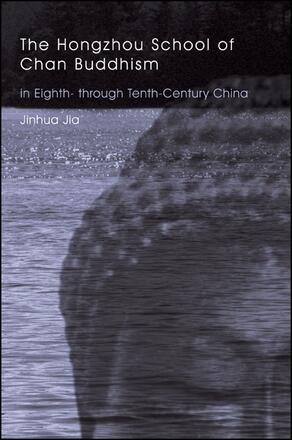
The Hongzhou School of Chan Buddhism in Eighth- through Tenth-Century China
Alternative formats available from:
A comprehensive study of the Hongzhou school of Chan Buddhism, long regarded as the Golden Age of this tradition, using many previously ignored texts, including stele inscriptions.
Description
This book provides a wide-ranging examination of the Hongzhou school of Chan Buddhism—the precursor to Zen Buddhism—under Mazu Daoyi (709–788) and his successors in eighth- through tenth-century China, which was credited with creating a Golden Age or classical tradition. Jinhua Jia uses stele inscriptions and other previously ignored texts to explore the school's teachings and history. Defending the school as a full-fledged, significant lineage, Jia reconstructs Mazu's biography and resolves controversies about his disciples. In contrast to the many scholars who either accept or reject the traditional Chan histories and discourse records, she thoroughly examines the Hongzhou literature to differentiate the original, authentic portions from later layers of modification and recreation.
The book describes the emergence and maturity of encounter dialogue and analyzes the new doctrines and practices of the school to revise the traditional notion of Mazu and his followers as iconoclasts. It also depicts the strivings of Mazu's disciples for orthodoxy and how the criticisms of and reflections on Hongzhou doctrine led to the schism of this line and the rise of the Shitou line and various houses during the late Tang and Five Dynasties periods. Jia refutes the traditional Chan genealogy of two lines and five houses and calls for new frameworks in the study of Chan history. An annotated translation of datable discourses of Mazu is also included.
Jinhua Jia is Assistant Professor of Chinese Literature at the City University of Hong Kong.
Reviews
"This is a gem of sinological scholarship … the author's research diligence is impressive indeed. Any specialist in Chinese religions allowed to take only a single secondary work on this crucial middle period of Chinese Chan history to some imaginary desert island … would certainly select this volume for its encyclopedic citation of primary and secondary sources, its integrated strategy of critically defining a corpus of authentic documents followed by their systematic analysis, and its closely reasoned analysis of historical and doctrinal issues." — H-Net Reviews (H-Buddhism)
"There is certainly much to admire in this work, which will be consulted in future by all scholars working on the development of Chan, especially for its accounts of long-disputed sources." — Bulletin of the School of Oriental and African Studies
"Jia critically surveys the available scholarship in Japanese, English, and Chinese, and puts forth her own conclusions supported by extensive citations of traditional Chinese sources that have generally been overlooked." — Steven Heine, author of Dogen and the Koan Tradition: A Tale of Two Shobogenzo Texts